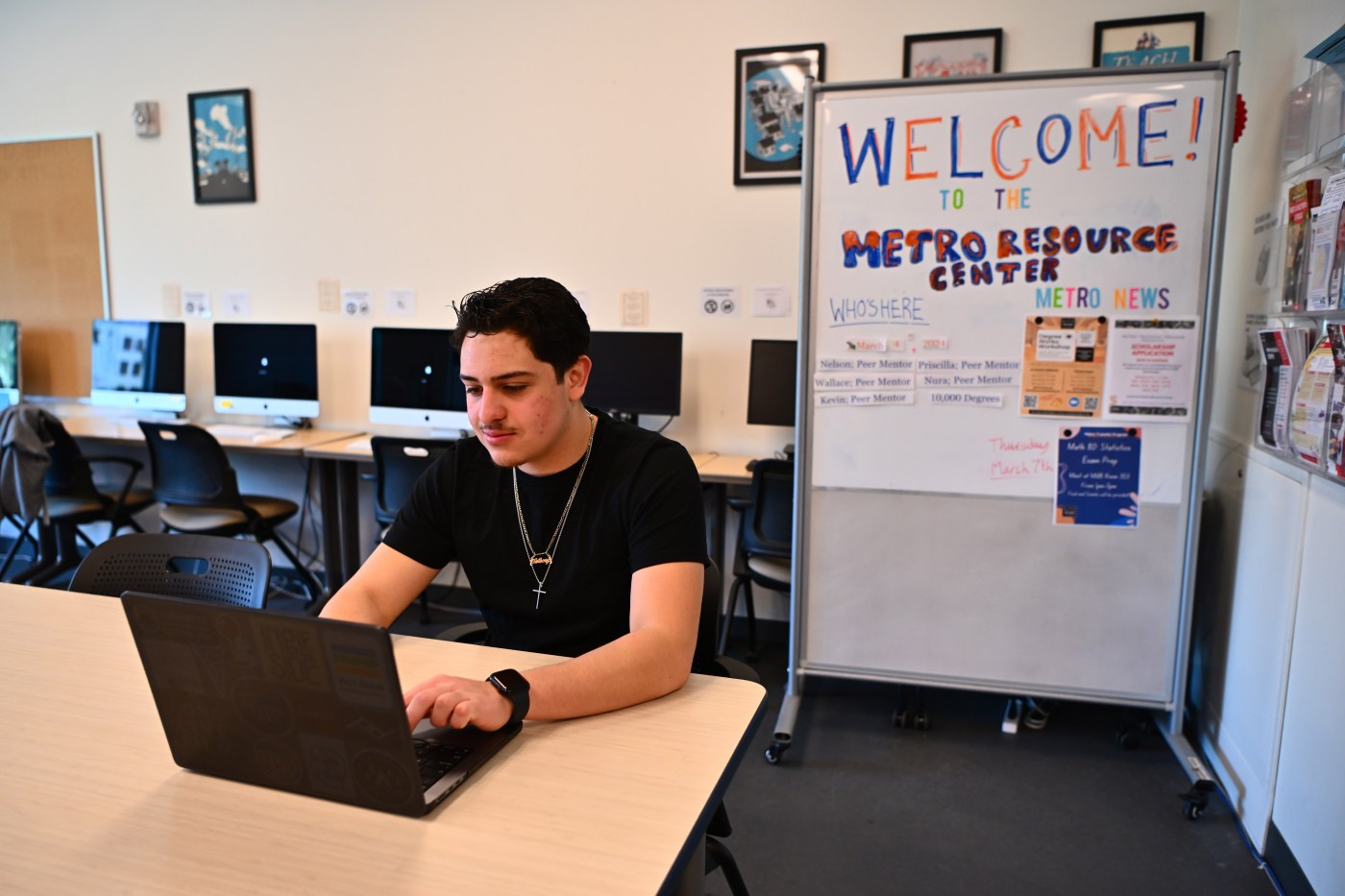A month before students must decide where they will go to college, the botched revamp of the federal financial aid process has caused aid applications to plummet by more than 30% compared to last year. Now, California universities are bracing for steep declines in student enrollment.
“I have not seen numbers this low in years – even during the pandemic we had higher numbers of applicants,” said Sonia Jethani, associate vice president of Financial Aid and Compliance at California State University East Bay. “It’s not looking good right now, all across the universities. It’s not just East Bay.”
For the first time in more than 40 years, the Department of Education released an overhaul of the FAFSA – the Free Application for Federal Student Aid – in an attempt to make it easier for students to apply and qualify for college financial aid.
But what followed was a bureaucratic nightmare impacting millions of students and thousands of schools.
Related Articles
UC Regents name Richard Lyons as new UC Berkeley chancellor
As the Stanford-born Marriage Pact takes off, some students find lasting love
Opinion: Struggling to get help with college through the FAFSA? Don’t give up
NAIA all but bans transgender athletes from women’s sports
Biden announces ‘life-changing’ relief from ‘crushing’ student loans
The mess began when the application was launched two months later than expected. And when the department finally soft-launched the new form at the end of December, the website was only operational for portions of the day. The crisis grew as students reported issues filling out and submitting their applications.
One of the biggest hurdles involved students from families considered “mixed status” – meaning the student is a U.S. citizen with a Social Security number, but the parent is not. The new FAFSA forms prevent undocumented parents from completing their portion of the application, so students were unable to finish applying.
The error was so persistent that the California Student Aid Commission partnered with CSU, the University of California and the California Community Colleges chancellor’s office to offer an alternative financial aid application for students from mixed-status households.
Since January, more than 30 problems have been reported with the new application. And just a month before students are expected to declare their school choice, 13 issues remain. And many students are still waiting to receive financial aid packages.
“There are entire populations of students that weren’t even able to access the form until a couple of weeks ago. And on top of that, there were errors within the form,” said Denise Peña, San Francisco State University’s director of the office of student financial aid, who said FAFSA applications are down about 40%. “We’re a month away from when new students would be deciding what colleges they’re going to and returning students would be registering for classes. And we’re not even close to being ready.”
As of this week, FAFSA applications from high school seniors in California are down by more than 33% statewide, according to data from the National College Attainment Network. And California universities said they’ve seen a significant decrease in financial aid applications.
“At this point in time we’re maybe 43% lower than where we were last year with our continuing students,” said Lorena Rodriguez, director of UC Santa Cruz’s office of financial aid and scholarships.
The Department of Education announced Wednesday that as many as 16% of the 7 million submitted applications will need to be corrected before the department can process them. And 30% of the already submitted applications are potentially affected by processing or data errors, the department added.
But with the enrollment deadline fast approaching, schools will now have to decide whether to send out financial aid packages with inaccurate aid amounts or wait for the Department of Education to recalculate and reprocess applications.
Jethani said CSU East Bay will send out award notifications in the second half of April and is advising students to read their award letters very carefully and pay attention to any communication from the financial aid office.
“When we send out these notices to students we’re going to have to tell them this is the information that your financial package is based on…but it is subject to change because of all the errors that continue to happen,” Jethani said. “It’s pretty frustrating and we might have students out there with financial aid packages that will change.”
UC Santa Cruz has provided students and families with an estimated aid calculator to help them determine how much aid they might receive and make a decision on which school they can afford to attend. Rodriguez said the school will start sending out estimated financial aid offers by May 2 – giving students only two weeks to decide where they will attend school in the fall.
And as universities are still recovering from the pandemic’s impact on enrollment, some schools are concerned the hurdles associated with the new FAFSA rollout will result in students deciding not to enroll at all.
At a Congressional hearing Wednesday titled “FAFSA Fail,” the Republican chair of the House Higher Education subcommittee, Utah Rep. Burgess Owens, said the “botched implementation” of aid application could cause colleges and universities to see a 20% drop in enrollment this year.
Mark Kantrowitz, president of Cerebly, Inc., a consulting firm specializing in student financial aid, said at the hearing “that the drop in college enrollment may be worse than the pandemic, causing some colleges to close.”
“One of the greatest concerns that we have at the moment is that some of these students who are facing challenges with submitting the application will eventually give up on doing it and forgo college for the next academic year,” said Rodriguez of UC Santa Cruz.
“I’m thinking about a first generation, low-income student who maybe doesn’t have the support at home and their high school counselor hasn’t been able to figure out how to file their FAFSA because there were so many problems,” Peña said. “If that student gave up, we lost that kid a long time ago.”
University officials said they’re hopeful more students will apply once the errors to the FAFSA have been resolved. And ultimately, they believe the new application will expand and improve students’ access to financial aid.
“Ultimately this FAFSA simplification process will be a much better process that will provide additional financial aid eligibility for students and it will be an easier process for families to navigate,” Rodriguez said. “We’re very hopeful …that next year our families don’t have to go through this.”












